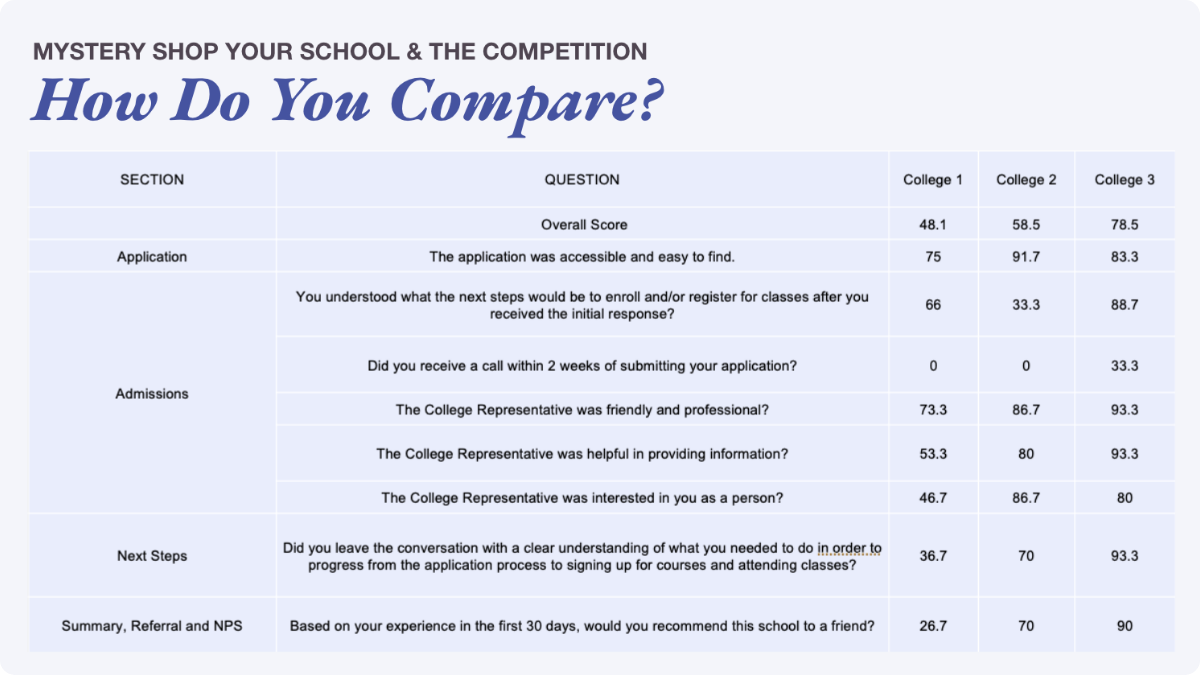Ever wonder how the big online brands drive enrollment? Read on and discover how to use pages from their playbook and reverse the trend of declining enrollment at Community Colleges.
These seven steps are explained in detail in a recorded webinar as well.
7 Ways to Increase Community College Enrollment
1. Develop a Prospecting Mindset —
Start by adding an inquiry form. Sadly, most community colleges start their student journey with an application. This is a huge mistake. Putting an inquiry form on your home page and allowing prospects to request more information by completing a couple of simple steps is a much better start to the new student journey. Not sure how this works? Visit GCU.edu and note the prominent position occupied by “Request Info.” And yes, its highlighted here on and on their home page to draw attention and drive traffic. It’s one of the things their enrollment management team obsesses over.
2. Nurture Your Prospects –
To do this you will have to have a prospect pool. But if you embrace point one above, you will soon be creating a robust prospective student database. That means you now need a communication plan. This plan should include texts, calls and emails. And you should actively invite your prospects to campus events, encourage them to apply, serve up meaningful video content, and more. Remember that many of your prospects will inquire 9 months or a year in advance. So, your communication plan can’t be a one and done. You need to engage your prospects again and again over time.
3. Respond to Your Inquiries and Applicants –
Your private college competition responds immediately to information requests! This could be the most difficult part of an effective enrollment management strategy for a community college to address and you may need to work with an out-sourced contact center to accomplish this step, but it’s worth it. Your private college competition is responding with a personal phone call within minutes when an application or information request is received.
4. Reduce Friction in the Student Journey —
Map your student journey. Unfortunately, it isn’t easy to enroll in college. Especially for first generation students. There is a myriad of steps to complete, and these may vary for different types of students (full time first time; one class only; transfer students). We know this BTW from doing mystery shopping for community colleges. Each step in this journey can be a decision point. If the process is too complicated your applicants may just give up. And each step is often a hand-off. With each hand-off “ownership” of new student enrollment can be diluted. Mapping the student journey and quantifying the pain points can draw attention to areas that need streamlining or additional staffing.
5. Understand Your Competition —
You may be dropping that ball while your competition is flourishing. A competitive shop will tell the story and help impact cultural change. Just look at the redacted results below:

6. Help Your Applicants Get Over Barriers to Become a Student –
Don’t neglect students who miss steps in the process. You are probably sitting on a gold mine of hot prospects and applicants who need a nudge. Think about these groups – and create a plan to call them to offer help and encouragement:
- FASFA senders who never applied
- Online applicants who didn’t complete the application
- Financial aid awardees who never accepted their package
- Applicants who didn’t attend orientation
- Orientation attendees who haven’t registered for classes
7. Rework the Dropouts and Stop Outs –
Whenever we are engaged to do an enrollment intervention project this is the first pool I dive into. Each semester you have hundreds of students who don’t continue. Embracing “re-admissions” is one of the easiest and fastest ways to increase enrollment.
A complimentary webinar explaining these steps in detail is available for your review. You may request a copy here
Comments are closed.




Recent Comments